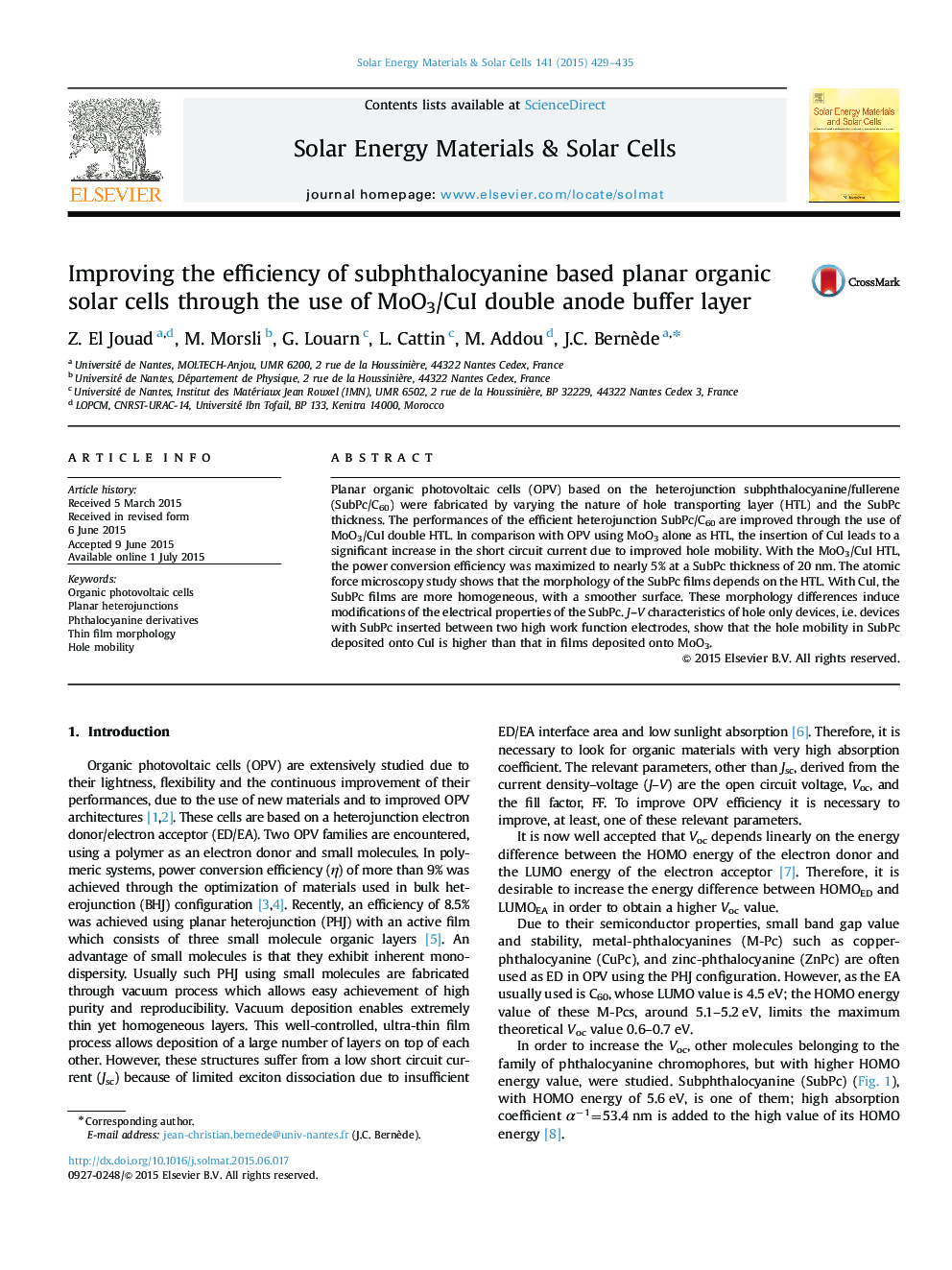| Article ID | Journal | Published Year | Pages | File Type |
|---|---|---|---|---|
| 77771 | Solar Energy Materials and Solar Cells | 2015 | 7 Pages |
•MoO3/CuI anode buffer layer improves the efficiency of OPV using SubPc electron donor.•Insertion of CuI increases significantly the short circuit current of the OPV.•CuI modifies the SubPc film morphology which improves the hole mobility.•There is no strong degradation under light of the organic molecules present in the OPV.
Planar organic photovoltaic cells (OPV) based on the heterojunction subphthalocyanine/fullerene (SubPc/C60) were fabricated by varying the nature of hole transporting layer (HTL) and the SubPc thickness. The performances of the efficient heterojunction SubPc/C60 are improved through the use of MoO3/CuI double HTL. In comparison with OPV using MoO3 alone as HTL, the insertion of CuI leads to a significant increase in the short circuit current due to improved hole mobility. With the MoO3/CuI HTL, the power conversion efficiency was maximized to nearly 5% at a SubPc thickness of 20 nm. The atomic force microscopy study shows that the morphology of the SubPc films depends on the HTL. With CuI, the SubPc films are more homogeneous, with a smoother surface. These morphology differences induce modifications of the electrical properties of the SubPc. J–V characteristics of hole only devices, i.e. devices with SubPc inserted between two high work function electrodes, show that the hole mobility in SubPc deposited onto CuI is higher than that in films deposited onto MoO3.
Graphical abstractFigure optionsDownload full-size imageDownload as PowerPoint slide
